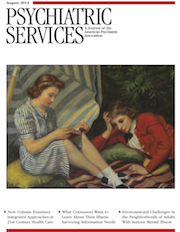Philosophical Issues in Psychiatry II: Nosology
With the arrival of DSM-5 this year, we welcome this comprehensive review of the thinking that has led to classifications in psychiatry. Each edition of the Diagnostic and Statistical Manual of Mental Disorders has been the result of a scholastic approach of focusing on the evolution of distinctions and definitions. Psychiatric nosologists traditionally have not pursued the empirical approach of conducting clinical trials to test one classification system versus another classification to see which group of patients is best served.
In November 2012 in Copenhagen, 16 nosological experts held a conference in which papers were presented and discussed, and those papers formed the basis of this book. For whatever reason, psychiatric nosologists focus far more on schizophrenia than on depression and quote Kraepelin more than Freud—and Kandel not at all. Although 44% of DSM-IV-TR consists of entities with known etiologies (such as substances and somatic medical conditions), the focus at this conference was almost entirely on entities that have unknown etiologies. What can be learned from entities with a known etiology was not addressed.
Coeditor Kendler discusses the tensions between “clinician and researcher, reliability versus validity, past versus future, psychiatry versus psychology, realism versus nominalism, descriptive versus etiologic models and surface versus deeper phenomenological characteristics of psychiatric symptoms and syndromes.” On reading that list, one might conclude that the Copenhagen conference was a hot, bloody affair. On the contrary, in the book a scholastic tone of harmony prevails.
As to research interests, a fine chapter by Michael First on research domain criteria (RDoC) put forth by the National Institute of Mental Health shows how RDoC provides a comprehensive template for research findings, which should meet the need of researchers.
Otherwise, one does not get a sense of progress since the publication of DSM-IV. Key to improvement in treatment in psychiatry is validators, or biomarkers. Since DSM-IV was published in 1994, there has been only a scant increase in the discovery of biomarkers, which have been identified in neurocognitive and in sleep disorders. This book provides a thorough look at the issue of validators and points out that weak reliability hinders progress. Unknown to the authors, the DSM-5 field trials would even raise questions concerning the progress on reliability achieved by DSM-III, DSM-III-R, and DSM-IV.
For those wanting to be sophisticated as to the foundations of the DSMs, read this book. It provides a wide range of key concepts, from the times of Hippocrates to the contributions of other giants in medicine and the thinking of those who had a huge impact on DSM-5, such as Darrel Regier, Kenneth Kendler, and Michael First.



